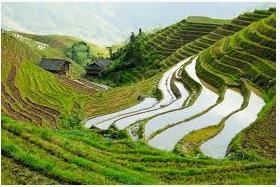UPSC Exam > UPSC Tests > Test: Rural & Urban Livelihoods - UPSC MCQ
Test: Rural & Urban Livelihoods - UPSC MCQ
Test Description
10 Questions MCQ Test - Test: Rural & Urban Livelihoods
Test: Rural & Urban Livelihoods for UPSC 2025 is part of UPSC preparation. The Test: Rural & Urban Livelihoods questions and answers have been prepared
according to the UPSC exam syllabus.The Test: Rural & Urban Livelihoods MCQs are made for UPSC 2025 Exam.
Find important definitions, questions, notes, meanings, examples, exercises, MCQs and online tests for Test: Rural & Urban Livelihoods below.
Solutions of Test: Rural & Urban Livelihoods questions in English are available as part of our course for UPSC & Test: Rural & Urban Livelihoods solutions in
Hindi for UPSC course.
Download more important topics, notes, lectures and mock test series for UPSC Exam by signing up for free. Attempt Test: Rural & Urban Livelihoods | 10 questions in 10 minutes | Mock test for UPSC preparation | Free important questions MCQ to study for UPSC Exam | Download free PDF with solutions
Detailed Solution for Test: Rural & Urban Livelihoods - Question 1
Test: Rural & Urban Livelihoods - Question 2
Which of the following is the non farming activity
Detailed Solution for Test: Rural & Urban Livelihoods - Question 2
Detailed Solution for Test: Rural & Urban Livelihoods - Question 3
Detailed Solution for Test: Rural & Urban Livelihoods - Question 4
Detailed Solution for Test: Rural & Urban Livelihoods - Question 5
Detailed Solution for Test: Rural & Urban Livelihoods - Question 6
Detailed Solution for Test: Rural & Urban Livelihoods - Question 7
Test: Rural & Urban Livelihoods - Question 8
There are almost ____ crore street vendors' in the country working in urban areas
Detailed Solution for Test: Rural & Urban Livelihoods - Question 8
Detailed Solution for Test: Rural & Urban Livelihoods - Question 9
Test: Rural & Urban Livelihoods - Question 10
Which of the following is not the reason for crop failure
Detailed Solution for Test: Rural & Urban Livelihoods - Question 10
Information about Test: Rural & Urban Livelihoods Page
In this test you can find the Exam questions for Test: Rural & Urban Livelihoods solved & explained in the simplest way possible.
Besides giving Questions and answers for Test: Rural & Urban Livelihoods, EduRev gives you an ample number of Online tests for practice
Download as PDF















